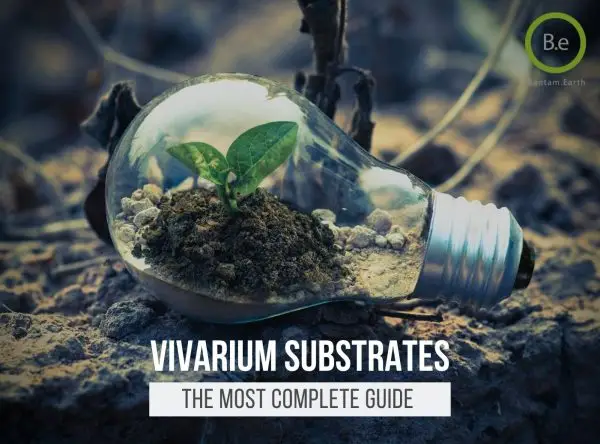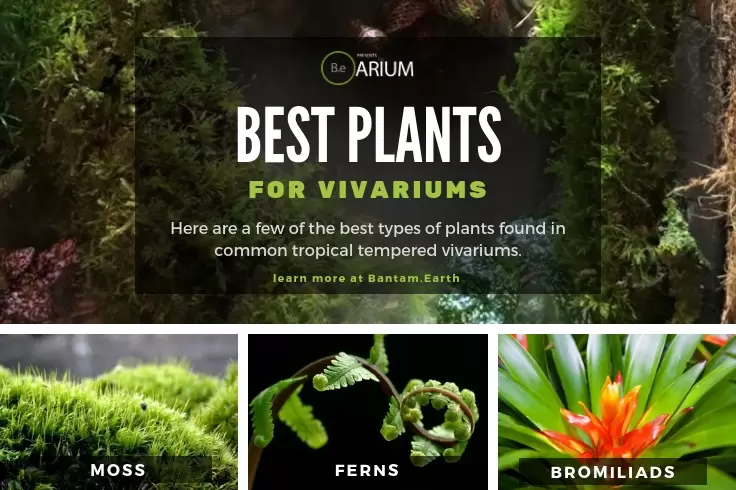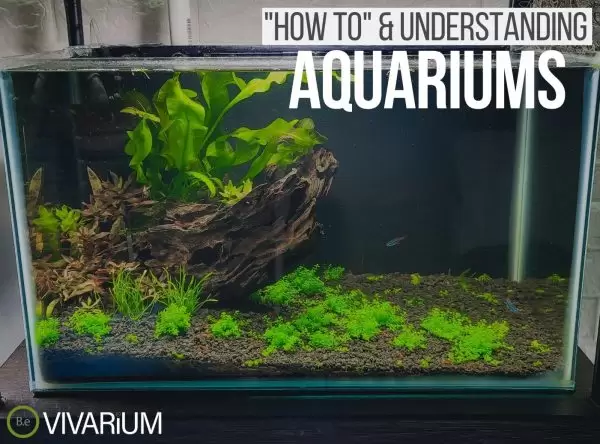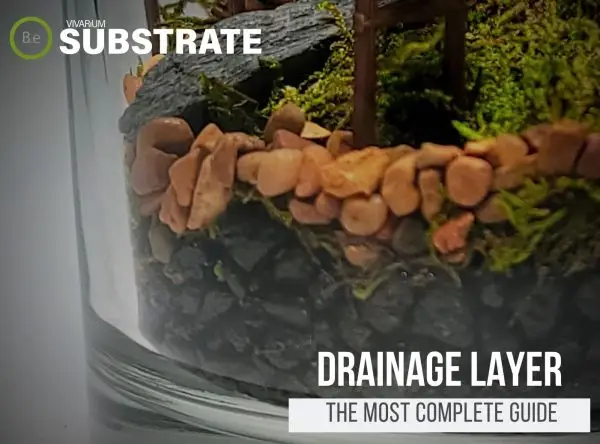Prior to publishing this guide, I did quite a bit of research on the actual term vivarium. Comparing literature found in textbooks with what ranked on a number of search engines of the word, sort of left me feeling like I needed to do my part in justifying a clearer answer to what they actually are.
I’m going to try my very best to give you a detailed guide to understanding the very nature of a vivarium and how to tailor an enclosure to your particular animal or set of plants.
After reading this guide be sure to check out the various types of vivariums and let us know if you’d like to see one covered that we haven’t got to yet.
Table Of Contents:
ToggleWhat Is A Vivarium?
A vivarium, also commonly referred to as “vivaria”, is an enclosure made to house plants and/or animals. The viva part of the word comes from the Latin word vivus, meaning “living.”The word itself translates to “a place of life.” The plural form of the vivarium is vivaria.


Vivarium Vs Terrarium: What’s The Difference?
The key difference between a vivarium and a terrarium is simple. One has an established animal enclosed, and one does not. As a result, adding an inhabitant to a terrarium changes the enclosure to a vivarium or at the very least, a bioactive terrarium.
It’s easy to mix up the two terms. Many popular terrariums today are complex systems based on the premise of a planter. If you’re here to build a land-dominant enclosure that could sustain a living animal, it will more than likely be bioactive and you are at the right place.
Types Of Vivariums:
Vivariums are literally a representation of nature in a case, so they come in a variety of ways. There are four main types of ecosystems that can then be broken down into more individualized styles:
- Aquarium – A fully aquatic enclosure that will consist of saltwater, freshwater, or a combination of both (brackish). These types of vivariums are made to resemble large bodies of open water like oceans or lakes.
- Terrarium – A non-aquatic enclosure that will consist of terrain-like features. These tanks are usually modeled to look like various types of land found in nature like the forest, jungle, or desert.
- Paludarium – A semi-aquatic enclosure that will consist of both water and land. These vivariums are designed to resemble land that has water flowing through or around it like the rainforest or woods with a creek.
- Riparium – A mostly aquatic enclosure that will consist of water with parts of the hardscape emerging from the water. This type of setup will resemble shorelines or river banks.


Browse Common Types Of Vivaria
The many other types of vivariums you will see out there are more than likely based on one of these core designs. If you are building a vivarium with the intention of housing a specific type of animal, be sure to go with a design that closely fits that animal’s needs.
We will go deeper into why inhabitants need a specific type of vivarium later. For now, check out a few of these popular enclosures to get an idea of what could be done when building a more specific type of tank:
Building a Vivarium
This guide will cover the building of a bioactive terrarium. If you are more interested in another type of enclosure, be sure to check out the vivariums we linked above.
Building a vivarium can be slightly different depending on the type of animal being kept in it. This is an enclosure that will closely resemble a forest floor which is ideal for moderate humidity, low light thriving plants, and animals.
The Hardscape
The hardscape is essential to every vivarium. It is the foundation of the tank and will regulate the overall ecosystem depending on the type of material it is. This can either be composed of rock or wood.


Even though the substrate will be put down into the enclosure first, the hardscape should be decided before any other elements are considered. Learn more about the importance of hardscaping in this article if you need help choosing the right types of material for your specific build.
The Substrate
The substrate layer of the vivarium is composed of soil and some type of drainage. A coco soil mix will be ideal compared to other types of soil because it’s lighter and lasts much longer.
You will want something that is easy for plants to root through. The material should also hold moisture well. Healthy bacteria reside in this layer and aid with the breakdown of nutrients that the plants will absorb.


Beneath the soil is a layer for draining excess water. This layer of the setup is where your gravel or false bottom goes. A false bottom is a material like gravel that a lot of hobbyists find heavy and often go with lighter, engineered material like clay pellets.
This area is important. It provides an easy way for stagnant water to escape the reach of flora roots in the potting layer. Allowing water to settle down into the drainage helps keep the humidity levels stable within the enclosure.
The drainage layer also serves as a good spot for healthy bacteria to thrive and break down unhealthy chemicals like ammonia. This layer is usually covered with a wool sheet to separate it from the substrate.
The Plants
The Plant layer of the bioactive terrarium is the centerpiece of the enclosure. This layer comprises the ground cover and upper plant parts (stem, leaf & flower). The ground cover is meant to help keep moisture in the substrate.
It will consist of leaf litter to give an aesthetic look and provide shelter to small critters. Be creative! Try adding wood, various plants that fit the ecosystem, and other accents like mushrooms, moss, or lichens.


The Lights
The Lighting layer is a very important aspect of a vivarium. Insufficient light and plants will not be able to produce energy from photosynthesis. You can use direct/indirect sunlight or artificial lighting. I recommend LED lighting, but you can also use fluorescent lighting as well.
A day and night cycle will be ideal for plants and animals living in the vivarium. Consider setting up a timer for the lights so they consistently go on and off every day… Just like the real world!


Vivarium Care & Maintenance
Now that we’ve established the basic setup of the wooded vivarium… Here are some caretaking tips for a thriving vivarium. These tips are essential for the longevity of the overall life of the bioactive terrarium.
Ideal Temperatures – Even though most plants will do just fine in typical households at room temperature, some species of animals will need very specific climates. Be sure to do research on the inhabitants being kept and stock a heater in the form of a heating pad or lights.
Regulate Humidity – Another very important factor for some animals is the moisture in the air. Specific plants and animals being kept need higher humidity levels than the substrate may offer… Try adding a fogger to kick things up. Also be cautious that the humidity isn’t too high as well, causing respiratory issues.
Proper Lighting – Even though we touched on this earlier, it’s very important that some plants receive a specific spectrum of light. Most reptiles will need sun rays in order to survive so make sure to provide additional UV and/or basking where needed.
Adequate Airflow – This is something most won’t notice when initially starting a vivarium. Air can become stagnant as well and proper ventilation or fans will be a necessary plus to circulate fresh air and prevent mold from setting in.
Good Water Flow – Some easy ways to avoid stagnant water would be to install a drainage outlet in the false bottom layer allowing the release of water build-up. Additionally, adding a mister system or fogger will help circulate water to the upper areas of the vivarium where humidity levels will essentially be lower.


Best Vivarium Plants
There are a number of plants that would be great for a vivarium depending on the type of bioactive terrarium you are making (desert, wooded, tropical). I will recommend a few plants that would suit the type of vivarium we are covering today.
Keep the inhabitants in mind as well if you plan on adding any. Vivarium plants are great because many animals depend on the vegetation around them for things like shelter, diet, and even mating.
- Mini Ferns – These are a great background plant for shelter and “filling up” the vivarium. Ferns come in different shapes and temperaments making them good for most terrarium types. These types of plants have higher humidity levels.
- Moss – These are good carpeting plants that tend to maintain moisture in the substrate very well. This plant should be kept on the lower end of the vivarium near the more moist areas of the tank. Ultimately, moss is a really good “filler” plant but fully capable of being the centerpiece of the vivarium.
- Pothos – Like many other types of Aroids, come in various shapes and forms. These are some of the easier plants to care for and can spread quickly if not maintained. Making this plant is great for climbing and can also provide an ideal spot for animals to find comfort resting.
- Air Plants– One of the more popular plants on the list, these plants are aesthetically pleasing to have and can really bring out the look of a vivarium. Bromeliads and tillandsias thrive in brighter-lit settings and will often reward your vivarium with brighter more colorful leaves order lighter.
More about vivarium plants can be found here!


Best Vivarium Animals
When it comes to vivarium animals, be very selective and make sure to do as much research as you can so you are bringing that inhabitant into the best habitat it will thrive in. Below are a few examples of animals that would do well in the setup we’ve built:
-
- Isopods – These, as well as springtails, are key to making every terrarium bioactive. These guys do an incredible job keeping things clean.
- Frogs – Poison Dart Frogs and Tree Frogs are good picks for a vivarium high in humidity and dense flora.
- Skinks – Crocodile Skinks is one of my personal favorites. These guys are nocturnal and like to hide most of the day.
- Gecko – Tokay Gecko, and Crested Gecko are common picks if you are going for something a bit more social.
- Newts – Fire Belly Newts are colorful and add lots of life to a vivarium


Best Vivarium Tanks
There are a number of ways you could set up a vivarium tank. Once you’ve decided on the type of setup you are going to put together here are a few variations of a vivarium tank you could consider building within:
Tall Vivarium Tank


Tall vivarium tanks are ideal for those looking to have animals that like to climb. These tanks allow a unique way of heat and light elevation. Inhabitants have the option of climbing higher for more warmth or hanging low and staying cool while quenching their thirst. https://amzn.to/2CwkxWS
Wide Vivarium Tank


Wide vivarium tanks are ideal for those looking to have animals that like to roam. These tanks are best when housing multiple inhabitants and allow room for animals of the same sex to coexist in a shared environment. https://amzn.to/2Fji2bm
Screen Vivarium Tank


Screen vivarium tanks are ideal for inhabitants who need to have airflow as their main priority. Chameleons, for example, need a constant flow of fresh air circulating throughout their tank… This would be the best option for them.
Furthermore, you will have to be mindful of the room these vivariums go in as well since they have such an easy influence on the vivarium. https://amzn.to/2JykH6e
Conclusion
Vivariums are extremely fun projects to get into. Understanding the difference and which specific type you would like to build will take you a long way and save you tons on aspirin. Did this guide help you better understand what vivariums are? If there’s a different type of vivarium you would like to have us cover, please feel free to let us know on your favorite social media platform!
Frequently Asked Questions
The main difference between a vivarium and a terrarium is that a vivarium is used to house living animals, whereas a terrarium is primarily used to house plants. Vivariums typically include a heating and cooling system, while terrariums may not. Additionally, while terrariums can often be made with any type of container, the walls of a vivarium need to be quite thick to provide temperature regulation and maintain the correct environment for the animals living inside.
The word “vivarium“ comes from Latin, meaning “place of life“, referring to a place to keep or study living organisms. It is used to refer to terrariums, aquariums, and other enclosures used to keep and observe plants and animals, oftentimes in a semi–natural habitat.
No, bugs are not necessary for a vivarium. Certain species of reptiles, amphibians, and other animals that live in vivariums may need insects as part of their diets, but they are not necessary for the vivarium itself.
A vivarium should be thoroughly cleaned every 4–6 weeks or as needed. This includes spot-cleaning any surfaces and removing uneaten food or waste. As part of the cleaning process, you should also check the temperature, humidity, and filtration system and make any necessary changes.
Yes, potting soil can be used in a vivarium, provided it has been sterilized. Before adding the soil to the vivarium, make sure it is thoroughly mixed with organic matter such as leaf litter and peat moss. In addition, the soil should be treated with an insecticide or fungicide to ensure it is free from diseases and pests.
Bioactive tanks can sometimes have a slightly earthy smell if not cleaned properly, however generally speaking they should not have an unpleasant odor.
High humidity in a vivarium can be caused by inadequate ventilation, over–watering, or other environmental factors such as temperature and exposure to sunlight. To lower the humidity in the vivarium, ensure it has adequate ventilation, and water only as needed, and adjust other environmental factors as needed.
To keep a vivarium humid, use a humidity gauge to monitor the humidity levels. Increase humidity levels by misting the vivarium with a spray bottle and placing water dishes, plants, live moss, and other moisture–holding elements inside. Install a humidifier inside the vivarium if needed to maintain humidity levels in warmer climates.
No, a drainage layer is not typically needed for a vivarium. However, it may be beneficial to add a layer of water–absorbing material beneath the substrate to prevent excessive moisture buildup.






